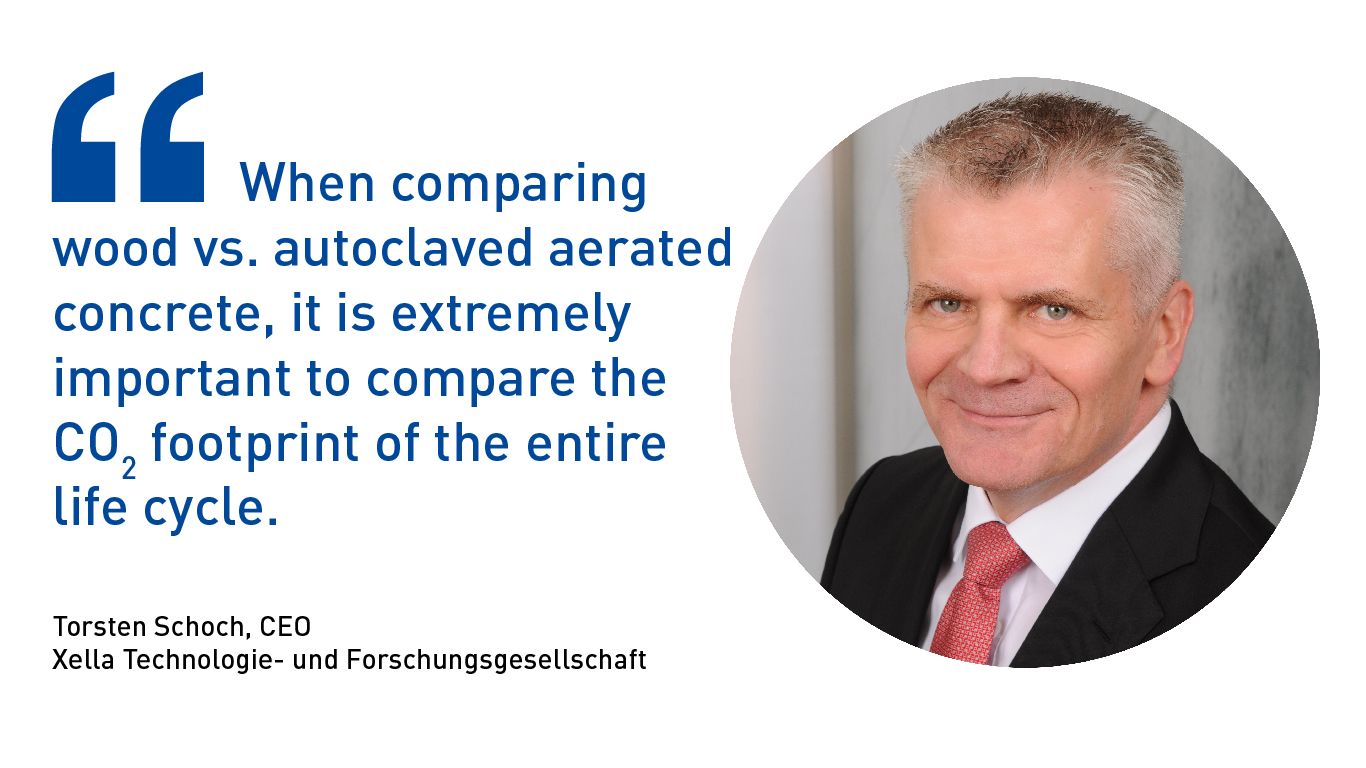What does it look like in the so-called operating phase?
The biggest CO2 expense for a house is not in the production of the building materials or in the construction of the buildings, but in the supply of energy. This is one of the major expenses - heating a family house during 50 years contribute to the emissions of 200 tons of CO2. A house built with the solid construction method is able to do a lot better here than wood because of its heat storage capacity. With a solid construction, the heating period starts later while wood reacts more strongly to climatic and temperature fluctuations.
All in all, we are talking about ten to 15 tons of avoided CO2 in favour of the solid house. So we see that a large proportion of CO2 from the production phase is offset here.
Who performs better in the maintenance phase?
This is a question of whether and how long the products used last. There is a difference of about ten tons of CO2 emissions in the constructions to the disadvantage of wood. These are factors such as the use of paint, which must be renewed more frequently, foils and other materials.
What is the impact of the recycling phase?
For most parts in a wooden building there is simply no possibility of recycling: it is burnt and releases CO2 at the end of its lifecycle. Now, one could argue that burning wood displaces other energy sources such as gas or heating oil, but since we assume that we will be climate-neutral by 2045 at the latest, there will not be a chance to compensate anything because of the fact fossil fuels no further exist. In the case of autoclaved aerated concrete, we want to take everything back to the factories, crush it and put it back into production.
So, over the entire life cycle of 50 years, we see no significant difference in the CO2 balance between the two construction methods.
There is no reason to say that timber construction is more climate-friendly. In the end, it has globally the same CO2 footprint as AAC. Nevertheless, we see it as one of our most important tasks to reduce our footprint in the production phase of AAC.
What approaches are you pursuing here?
The work on this is based on numerous measures and starts with the way we produce steam, which transport routes and options we use, how we do water management within the plants – Xella has developed an ambitious roadmap to reduce its CO2 emissions across its operation, with which we aim at reducing our CO2 emission intensity by 30 percent over 2019-2030. (Read more in our sustainability report)
Another important point for us is the fact that our products absorb CO2 throughout their entire life cycle and never release it again - for autoclaved aerated concrete this is 50 to 70 kilos, for sand-lime bricks even 70 to 90 kilos of CO2 per cubic meter. In relation to the single-family house described above, that's another two tons that would have to be included in the calculation. And: we don't burn autoclaved aerated concrete, but grind it and return it to the production process.
The third point is also important, but more difficult to implement: we process two CO2-intensive raw materials such as lime and cement, and here we do everything we can to reduce the Footprint. Even here, there are some exciting and promising approaches.
When the customer decides on the construction method for his house, other factors play a role beyond the issue of sustainability.
Sure, it must be said: whoever buys a house today asks about the price and what benefits they will get from the building. In Europe, a house is also seen as a financial investment and part of a heritage. This means: the longevity of solid construction also has a great advantage over timber construction here, in addition to others such as fire protection, disaster resistance, climatic conditions.
Finally: What is your vision of sustainable building?
Firstly: a high level of resource efficiency - taking little from nature, using natural resources as consciously as possible.
Secondly: as low an impact on the climate as possible - and by that I don't just mean the CO2 footprint, but also other factors such as soil quality, etc.
Thirdly: a long service life. What I install today, I have to be sure that I won't have to start replacing everything in ten to 15 years.
Fourthly: the circularity of a product. The goal must be that everything which is produced can also be taken back so that new products can be created from it. Our signal: neither on a building site should anything be thrown away, nor in industry itself. The throwaway society is over.
And fifthly: we must succeed in communicating to the end customer what sustainability really means.
Thank you very much for the interview.
